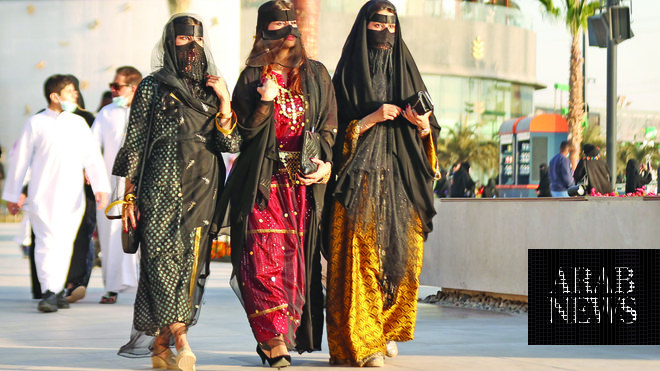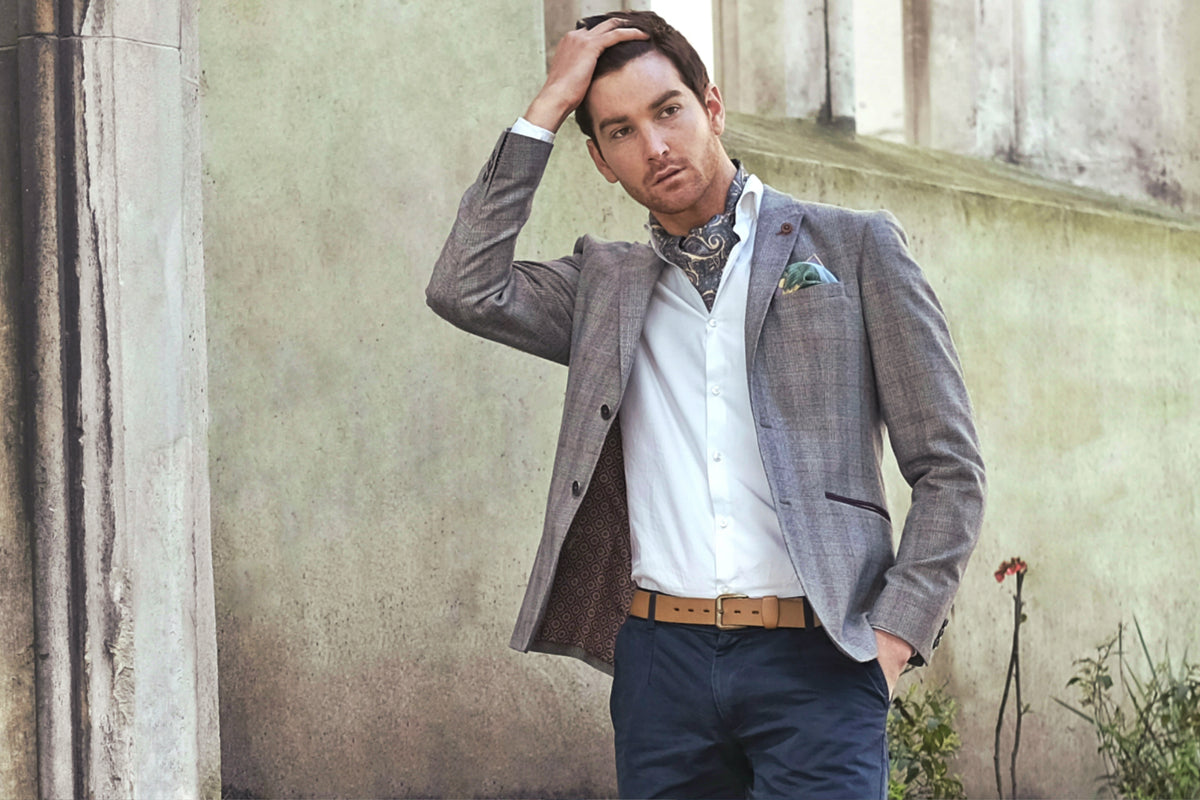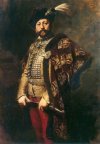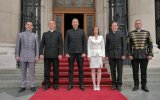Tbf most gowns/dresses are worn by ppl who didn't need to work much and at most only wrote and stuff so in a way western suit and trousers is actually a bit weird.The plain-white gowns often associated with Arab men (thawb) has only become predominant in the region only recently.
You are using an out of date browser. It may not display this or other websites correctly.
You should upgrade or use an alternative browser.
You should upgrade or use an alternative browser.
Aside from Western-style clothing, what alternative forms of clothing could have remained popular?
- Thread starter Shutenmaru
- Start date
Considering the Romans had to force people to wear togas by law, it shows that the weren't, shall we say, universally popular.I wonder if togas could have become more common/popular. They were never popular in the Byzantine Empire, and didn't remain the standard formal dress in the Western Roman Empire for all that long after Augustus. Maybe togas could be a ceremonial thing? Maybe the Holy Roman Emperors could wear togas at their coronation or something, to legitimise their "Roman-ness," and then it slowly becomes more of a feature of courtly life, and then formal wear more broadly?
Lol I have a long, long list of reasons to hate the Kingdom of Saudi Arabia, the UAE, and other GCC governments.I love your ....tactfulness.😉
Lol I have a long, long list of reasons to hate the Kingdom of Saudi Arabia, the UAE, and other GCC governments.
Wonder why?
If the Mongols somehow got even more wanked and took over even more of the world, we could perhaps see variations on the deel and other various kaftan-like clothes.
Wearing togas and tunics all day every day works in Italy and the rest of the Mediterranean world due to its quite warm climate, not so much in the more frigid Aachen though. Rome had a social taboo against pants, only barbarians wore those and you don't want to be assocaited with that. When fighting in colder climates the legions would take some extra cloth and bind it around their legs to emulate pants, until they just said to hell with it and adopted pants on their own. In Christian times togas also got the reputation of being immoral and immodest, far too revealing for a good god fearing christian.I wonder if togas could have become more common/popular. They were never popular in the Byzantine Empire, and didn't remain the standard formal dress in the Western Roman Empire for all that long after Augustus. Maybe togas could be a ceremonial thing? Maybe the Holy Roman Emperors could wear togas at their coronation or something, to legitimise their "Roman-ness," and then it slowly becomes more of a feature of courtly life, and then formal wear more broadly?
Lol I have a long, long list of reasons to hate the Kingdom of Saudi Arabia, the UAE, and other GCC governments.
I won't touch the other stuff and problems here......
.......
I don't think that I could survive in the "modern" dressing style for the muslimas there.
I like black clothes but not with those temperatures there....
The clothes would be much more fair if the women there could dress in lighter colors and lighter hijab too, as they had surely done so in the Past.
Last edited:
IIRC, wearing black clothes isn't necessarily all bad in high temperature areas.I don't think that I could survive in the "modern" dressing style for the muslimas there.
I likeblack clothes but not with those temperatures there....
It would be much more wearable if the women there could dress in lighter colors too, as they had surely done so in the Past.
Desert dwelling people wear dark coloured clothing all the time, after all.
Yeah, you are surely right.IIRC, wearing black clothes isn't necessarily all bad in high temperature areas.
Desert dwelling people wear dark coloured clothing all the time, after all.
Thing is, Saudi/UAE etc clothing nowadays are more or less "white sheets" for men and "black sheets" for women...... Bit embroidery here and there maybe........
......
Other countries are known for wonderful, colorful traditional clothing even today.......
.....
While the real traditional Saudi clothing seems to have been something like this
But no woman seems to wear it anymore...
And the guys had certainly more colorful and more practical clothing back than too, before the oil made them all rich enough to wear pure white....

Saudi Arabia’s cultural costumes come to life on Founding Day
RIYADH: Putting the golden corded agal (headband) on his head like his grandfather did before him, and placing the brown bisht (cloak) over his shoulders, Turki Abothnain felt proud to be in Boulevard Riyadh City to celebrate the country’s first Founding Day on Tuesday. “I feel so emotional...
 www.arabnews.com
www.arabnews.com
“Founding Day showed the beauty of women and authentic Arab dress. I feel like I've gone back in time and I'm living in an era I really missed 30 years ago when I was a kid. My children were asking earlier this day if I used to look like this always before and I proudly said yes,” she told Arab News.
With emotion in her voice and tears in her eyes, she said: “I hope we can live like this always and show the next generation our time and how we lived.”....
Comment of a Lady there..
Last edited:
From what my female friends + family tell me -- it actually isn't all that hot. They're lightweight, breathable, and generally more comfortable than they might look to the uninitiated.I won't touch the other stuff and problems here......
.......
I don't think that I could survive in the "modern" dressing style for the muslimas there.
I like black clothes but not with those temperatures there....
The clothes would be much more fair if the women there could dress in lighter colors and lighter hijab too, as they had surely done so in the Past.
Guess I am too "Western" minded...From what my female friends + family tell me -- it actually isn't all that hot. They're lightweight, breathable, and generally more comfortable than they might look to the uninitiated.
In the 19th century in Hungary there was an alternate to western style called "Díszmagyar" that was also accepted at the most elegant places. This was styled on early 18th century noble clothing. If things developed differently some kind of evolution of it might have remained in use till today.
The other picture is of the freshly elected MP's of the far right Mi Hazánk party. The same style has been worn previously by Jobbik representatives and seems to be a thing in ultra nacionalistic circles.
The other picture is of the freshly elected MP's of the far right Mi Hazánk party. The same style has been worn previously by Jobbik representatives and seems to be a thing in ultra nacionalistic circles.
Attachments
Fezzes would probably be a lot more common, if it wasn't for the influence of Ataturk and other secular nationalists. Initially, the Ottomans and other Muslims adopted fezzes to wrap their turbans around. During the reign of Sultan Abdülmecid I, however, in the 1830s -- when the Janissaries were abolished, and the Ottoman New Model Army was formed -- Western-style standardised military uniforms were adopted, along with Western formal and business attire (for men, at least). The one thing which set Ottoman official + military dress apart was the fez, which was retained (sans turban) to fulfill the Islamic expectation that men keep their heads covered.
This actually spurred some minor controversy at the time, since without the turban, the fez might fall off during prayer. But regardless, the fez became widely adopted by Muslims around the world during the 19th and early 20th centuries, and the fez itself became associated with Islam and (in the minds of Westerners, at least), general "Oriental" vibes -- to the extent that colonial troops from cultures which weren't even Muslim were given uniforms which included fezzes (e.g., British and German East African troops). Incidentally, this was also around the time that the crescent became widely seen (by Muslims and non-Muslims alike) as a symbol of Islam, even in places far removed from the Ottoman Empire.
The fez was banned by Kemal Atatürk, as were so many other aspects of Ottoman and Islamic identity. It fell out of favour in the Arab world for multiple reasons. In Egypt, it was associated with the much-hated monarchy; in Iraq and the Levant, with the Ottomans and with the British/French Mandates; and in the Peninsula, it was never all that popular anyway; (though it's still going strong, sort of, in the Maghreb, where it was invented). Secular Arab nationalists like Jamal Abdel-Nasser or the Baathists had little love for it. So the fez today is seen as just kind of quaint, for the most part, where it was once as expected in formal settings as a necktie.
This actually spurred some minor controversy at the time, since without the turban, the fez might fall off during prayer. But regardless, the fez became widely adopted by Muslims around the world during the 19th and early 20th centuries, and the fez itself became associated with Islam and (in the minds of Westerners, at least), general "Oriental" vibes -- to the extent that colonial troops from cultures which weren't even Muslim were given uniforms which included fezzes (e.g., British and German East African troops). Incidentally, this was also around the time that the crescent became widely seen (by Muslims and non-Muslims alike) as a symbol of Islam, even in places far removed from the Ottoman Empire.
The fez was banned by Kemal Atatürk, as were so many other aspects of Ottoman and Islamic identity. It fell out of favour in the Arab world for multiple reasons. In Egypt, it was associated with the much-hated monarchy; in Iraq and the Levant, with the Ottomans and with the British/French Mandates; and in the Peninsula, it was never all that popular anyway; (though it's still going strong, sort of, in the Maghreb, where it was invented). Secular Arab nationalists like Jamal Abdel-Nasser or the Baathists had little love for it. So the fez today is seen as just kind of quaint, for the most part, where it was once as expected in formal settings as a necktie.
Speaking of -- after the Islamic Revolution in Iran, neckties were considered a symbol of Western influence. They were never banned, but they became disfavoured especially by politicians and government workers, who will wear the rest of a Western-style business suit just without the necktie.as expected in formal settings as a necktie.
Speaking as a non-religious person who despises the necktie with a passion, this is just common sense, IMO.Speaking of -- after the Islamic Revolution in Iran, neckties were considered a symbol of Western influence. They were never banned, but they became disfavoured especially by politicians and government workers, who will wear the rest of a Western-style business suit just without the necktie.
What about cravats or ascots? I feel like they could've been more popular or even replaced existing neckties.Speaking as a non-religious person who despises the necktie with a passion, this is just common sense, IMO.





Still a nope on those. I don't even like having the top-most button of my shirt done up.What about cravats or ascots? I feel like they could've been more popular or even replaced existing neckties.





Oh I didn't mean to ask if you wanted to wear a cravat. I was just using your opinion as a Segway to talk about whether cravats could've taken the position ties currently have OTL.Still a nope on those. I don't even like having the top-most button of my shirt done up.
Personally though, I think cravats would be preferable since they're actually looser than ties and are typically worn on bare skin rather than around collars (see the pictures I posted). I think that sort of style is very good for arid climates. Telling as this style of cravat was very popular in California during the 60s to 70s
Ah, sorry.Oh I didn't mean to ask if you wanted to wear a cravat. I was just using your opinion as a Segway to talk about whether cravats could've taken the position ties currently have OTL.
That would be an interesting alternative, at least.
Share:

